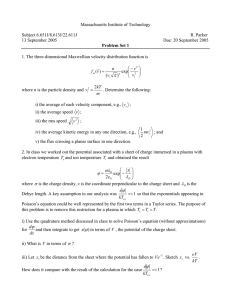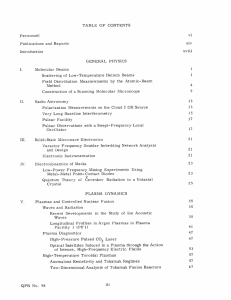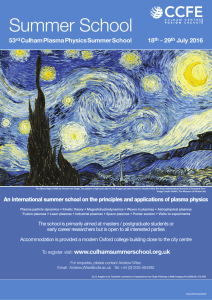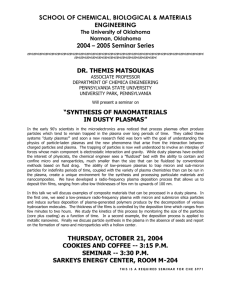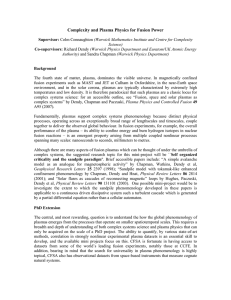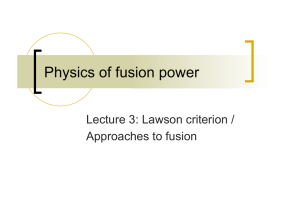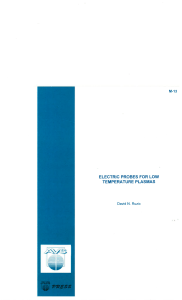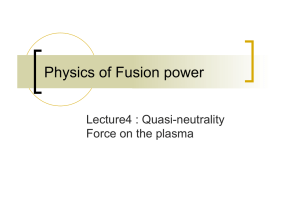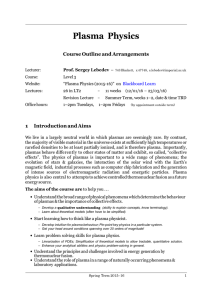Document 13608189
advertisement
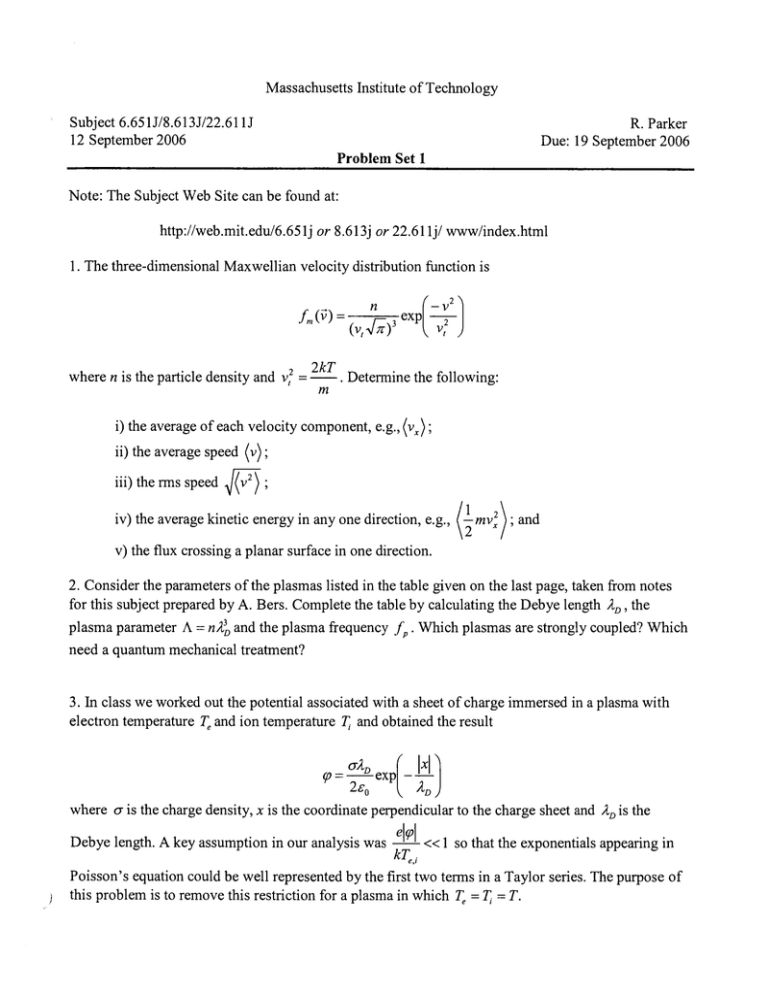
Massachusetts Institute of Technology Subject 6.6515/8.613J/22.611J 12 September 2006 R. Parker Due: 19 September 2006 Problem Set 1 Note: The Subject Web Site can be found at: 1. The three-dimensional Maxwellian velocity distribution function is f", (3= n (v,.\/IT)' exp($ j 2kT where n is the particle density and v,! = -. Determine the following: m i) the average of each velocity component, e.g., (v,) ; ii) the average speed (v) ; iii) the rms speed Jv2) ; iv) the average kinetic energy in any one direction, e.g., v) the flux crossing a planar surface in one direction. 2. Consider the parameters of the plasmas listed in the table given on the last page, taken from notes for this subject prepared by A. Bers. Complete the table by calculating the Debye length 4,the plasma parameter A = nAL and the plasma frequency need a quantum mechanical treatment? fp . Which plasmas are strongly coupled? Which 3. In class we worked out the potential associated with a sheet of charge immersed in a plasma with electron temperature T, and ion temperature and obtained the result where o is the charge density, x is the coordinate perpendicular to the charge sheet and /2, is the elpl << 1 so that the exponentials appearing in Debye length. A key assumption in our analysis was kc,; Poisson's equation could be well represented by the first two terms in a Taylor series. The purpose of this problem is to remove this restriction for a plasma in which =T =T. i) Use the quadrature method described in class to solve Poisson's equation (without approximations) do for -and then integrate to get x(p) in terms of V , the potential of the charge sheet. dx Problem 3 (Continued) ii) What is V in terms of o ? iii) Let xs be the distance from the sheet where the potential has fallen to ~ e - Sketch ~ . xs vs. eV kT -. How does it compare with the result of the calculation for the c a s e M << 1 ? kTe,i 4. A long cylinder of plasma with circular cross-section and radius a consists of cold (Te = = 0 ) electrons and singly charged ions with uniform density, ne = ni = no.The cylinder of electrons is perturbed a distance in a direction perpendicular to its axis. i) Find the frequency at which the electron cylinder oscillates assuming that the ions are immobile. (Hint: Assume 6 << a and that the perturbation produces a surface charge that creates a 2-D dipolar field.) ii) Repeat i) assuming that the ion mass is M. Plasmas Weakly ionized Ionosphere, D layer 70 km Gas discharge, weak current Gas discharge, strong current MHD energy convertor Strongly ionized Interstellar gas Solar wind Ionosphere, Fz layer 250 km Solar corona (Ro 1.5) Tokarnaks Alkali plasmas - surface ionization - Note: T, in OK, n, in m-3. Loglone LogloTe 9 17 21 22 2.5 4 5 3 0 6.5 11.5 13 20 18 3.5 5 3 6.5 8 3 AD@) A f~(fi) Strongly coupled? QM?
